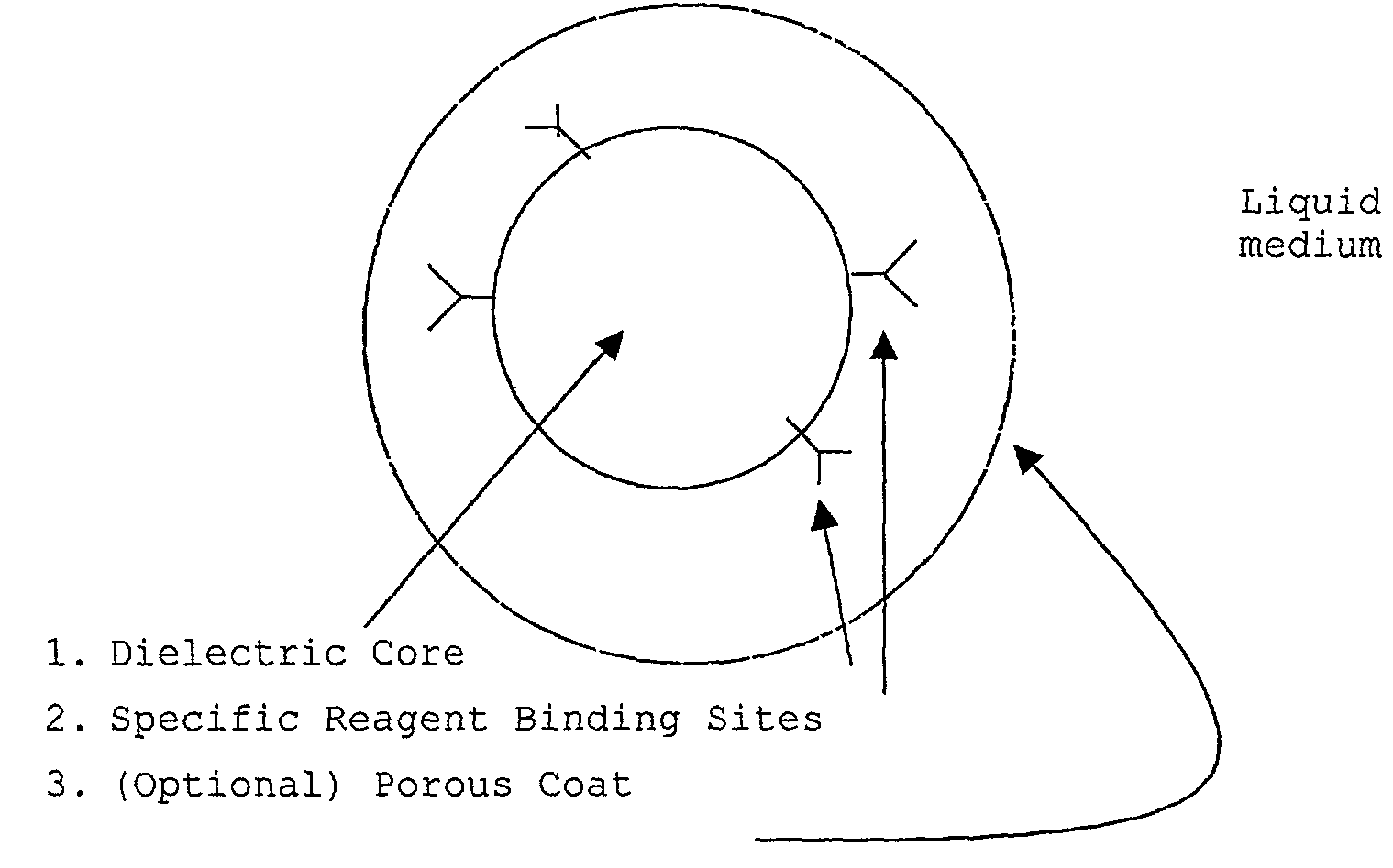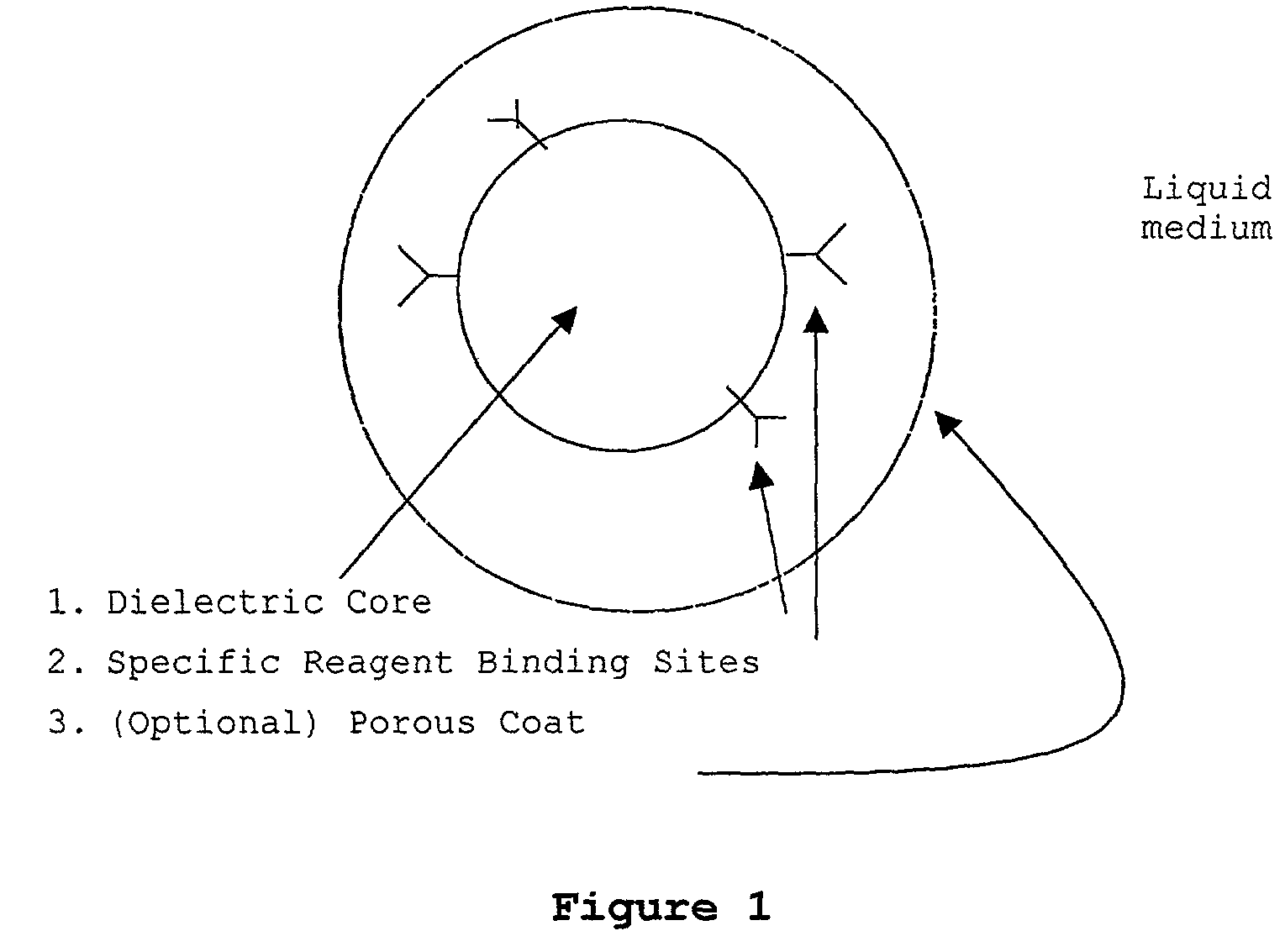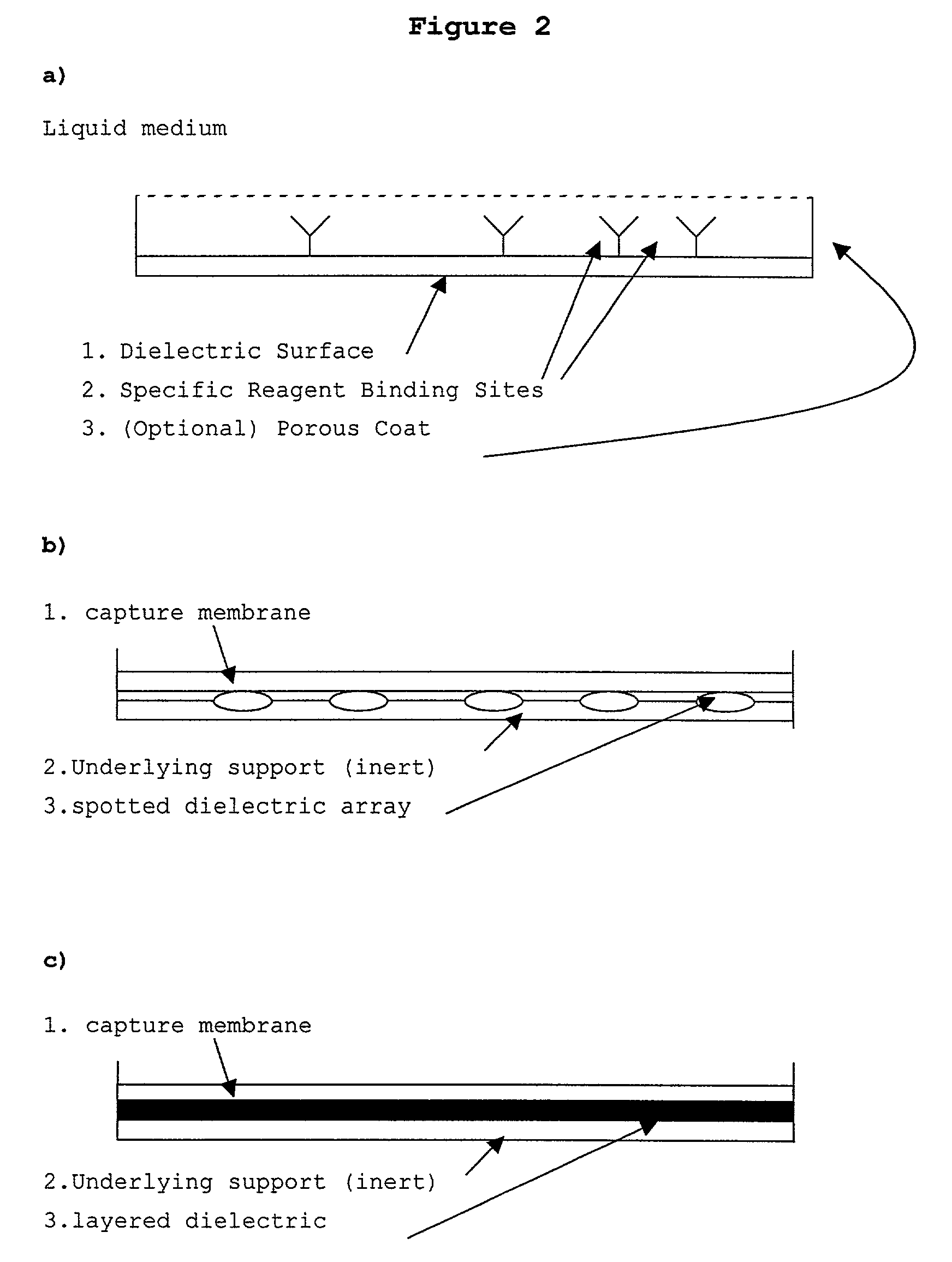Methods and compositions for directed microwave chemistry
a directed microwave and chemistry technology, applied in can solve the problems of natural proteins being susceptible to degradation, proteins are not particularly stable molecules, and no one has ever combined the field of artificial enzymes/antibodies with the field of dielectric chemistry, so as to accelerate the reaction
- Summary
- Abstract
- Description
- Claims
- Application Information
AI Technical Summary
Benefits of technology
Problems solved by technology
Method used
Image
Examples
example 1
Microwaves Preferentially Directed to Carbon Particles Suspended in Water
[0180]An experiment was carried out to test whether carbon particles in water would heat substantially faster than the water they are suspended in. The experiment involved a conventional kitchen microwave oven (Panasonic NN-S949, 1100 W output, 2.45 GHZ). Carbon is known to be lossier than water at the emitting frequency. Thus, a suspension of carbon (approx. 200 mg) in water (approx. 100 mL) should heat faster than neat water. Water (100 mL) was heated in the absence or presence of ground carbon (charcoal briquettes (Super G, Landover, Md.) were ground to a powder using a mortar and pestle). After 1.0 minute of microwaving, the carbon-containing water was nine degrees warmer (83° F.) than water alone (74° F.). (The heated carbon transferred its heat to water, which I measured). The experiment was repeated and similar results (nine degrees hotter in the presence of carbon) were found. This shows that substances...
example 2
Microwaves Preferentially Directed to Hydrated Clay
[0181]Three experiments were carried out to test whether hydrated clay would heat substantially faster than the water. A report by Buffler & Risman (1996) indicated that clay would heat faster than water, especially at 915 MHz. Clay is moldable and could be used as a core dielectric in beads or as a flat surface in cartridges. To test this hypothesis, a 2450 MHz emitting microwave oven was employed. Based on the report of Buffler & Risman, any positive result in these (2450 MHz) experiments would indicate that much better results could be obtained at 915 MHz.
[0182]Experiment 1: Approximately 100 mL spring water were heated in a plastic microwavable cup for 60 seconds in the same microwave as described in Example 1. The temperature rose from 25.0° C. to 92.5° C. The same volume of water, but containing approximately 200 mg clay (Bentonite 200 clay, supplied as dry powder from Great Lakes Clay and Supply Co., Carpentersville, Ill.) wa...
example 3
Preparation of Carbon-Containing Molecular Imprinted Polymer Particles That Bind L-Phenylalanine-p-Nitroanilide
[0185]There are many possible physical formats in which an artificial biomolecule is in thermal proximity to the microwave-heated dielectric. One type of format is a bead or particle. In the embodiment described here, carbon particles (the dielectric) and molecularly imprinted polymer (the artificial biomolecule) are formed into composite particles.
[0186]The polymer is created from monomers and crosslinkers in a solution containing both the print (template) molecule. Also present in suspension are carbon particles. As polymerization occurs, the growing crosslinked polymer entraps both the template molecule and the carbon particles. The polymer / carbon particle composite is ground to small fragments. This, the carbon particles and imprinted binding sites in the polymer are present in close proximity.
[0187]This example describes in detail the preparation of such a dielectric / a...
PUM
| Property | Measurement | Unit |
|---|---|---|
| frequency | aaaaa | aaaaa |
| frequency | aaaaa | aaaaa |
| frequency | aaaaa | aaaaa |
Abstract
Description
Claims
Application Information
 Login to View More
Login to View More - R&D
- Intellectual Property
- Life Sciences
- Materials
- Tech Scout
- Unparalleled Data Quality
- Higher Quality Content
- 60% Fewer Hallucinations
Browse by: Latest US Patents, China's latest patents, Technical Efficacy Thesaurus, Application Domain, Technology Topic, Popular Technical Reports.
© 2025 PatSnap. All rights reserved.Legal|Privacy policy|Modern Slavery Act Transparency Statement|Sitemap|About US| Contact US: help@patsnap.com



